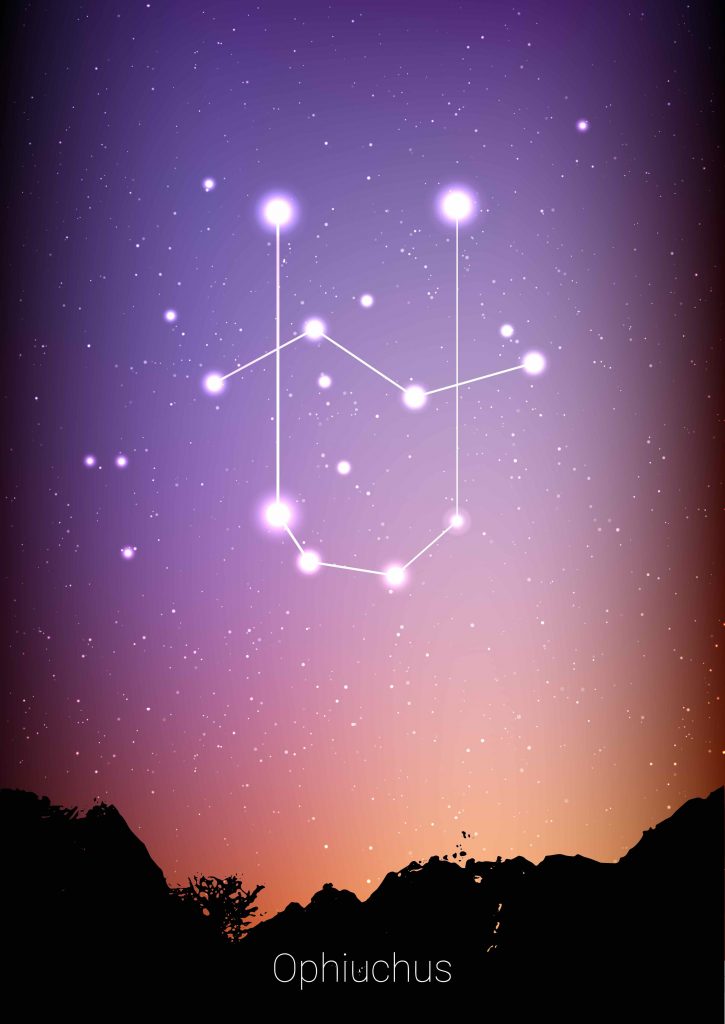
So, what about this 13th sign, Ophiuchus?
September 2016 news events included Mother Theresa’s canonization and the discovery of a Viking sword dated to the 10th century C.E. NASA also allegedly reported that nearly everyone’s zodiac signs had changed. You may remember this shocking headline, but there’s more to it than what’s evident at first glance. Although it’s been nearly three years since the initial uproar, it’s worth a second look to understand what all the fuss was about.
The Fault in Our Stars?
NASA’s January 2016 report mentioned that the Western zodiac’s position had shifted. Strict observance of the new calculations meant that zodiac signs’ start and end dates were pushed forward. Depending on the sign, these shifts ranged anywhere from a couple of weeks to nearly an entire month.
Tech Times writer Dianne Depra lists zodiac sign dates that were adjusted to reflect NASA’s calculations. She also discusses Ophiuchus, a 13th sign positioned between Scorpio and Sagittarius. Predictably, Sagittarians were told that they should follow Scorpio horoscopes or look to Ophiuchus instead. A Leo born on August 14 still had the same sun sign while another born on August 4 was now a Cancer instead. Or so the explanations went.
Somehow, this news didn’t become viral until September. The Boston Globe points to a Cosmopolitan article citing NASA’s information, but Cosmo writer Tess Koman contended that it had already become viral when she wrote her piece. Some were disgruntled and even angry at NASA, while a few skeptics seized the opportunity to debunk astrology.
Earth’s Wibbly-Wobbly Axis
NASA details that the Babylonians created a 12-sign zodiac, but our modern system comes from the Greek astronomer Ptolemy. EarthSky correspondent Christopher Crockett reveals Ptolemy expanded on Babylonian astrological studies and charted the constellations’ positions nearly 2,000 years ago. In some cases, he gave them new names based on Greek religion and culture. Those that changed included Aries, originally called “The Hired Man” by Babylon’s astrologers.
Constellations in our night skies look quite different than how the ancient Babylonians and Greeks observed them. Gradual deviations in Earth’s axis caused their apparent locations to shift. Crockett details that this subtle “wobble” effect has pushed our equinox and solstice points 30 degrees west. As a result, our 2019 summer solstice falls on the last day of Taurus instead of the first day of Cancer.
Does a 13th Zodiac Sign Really Exist?
So, what about this 13th sign, Ophiuchus? NASA briefly described it as an 18-day sign that the Babylonians omitted from their horoscopes. It falls between November 29 and December 17, cutting Scorpio to a mere seven days during the end of November.
Meanwhile, most contemporary astrologers insist that nothing has changed. When addressing NASA’s explanations, AstroStyle pointed out that the constellations have indeed shifted. However, the Western system follows a tropical zodiac based on the sun’s apparent path through 12 zones of 30 degrees each. Planetary positions are tracked based on this ecliptic, so zodiac sign dates remain as they were set by Ptolemy centuries ago.
Science writer Ian Ridpath delves deeper into Ophiuchus’ symbolism. This serpent bearer was associated with the Greeks’ medicine deity Asclepius. Already capable of healing, Asclepius’s powers extended to reviving the dead. He successfully resurrected King Minos’s son with help from a snake bearing healing herbs in its mouth. The Rod of Asclepius, a winged staff with coiled serpents, is a recognizable symbol in modern medicine.
Where Science and Mythology Meet
Astrology is a curious blend of astronomical knowledge and human belief. Its origins lie in a time when people looked to their natural world to guide their actions. We now understand what makes the heavens move, but basic human tendencies haven’t changed. Even as Earth’s axis and the night skies shift, our need to tell stories and find patterns remains the same.

